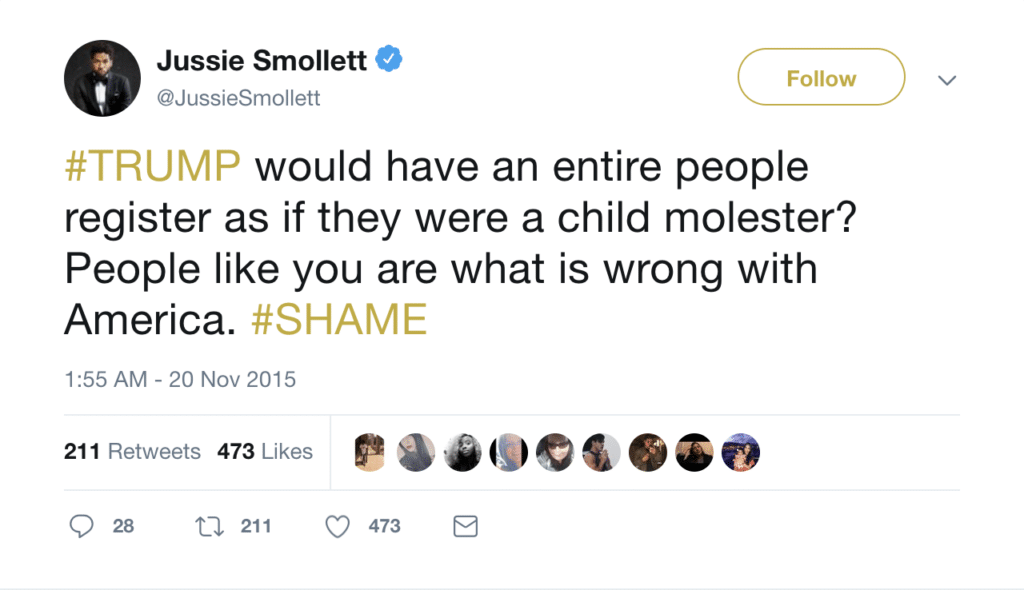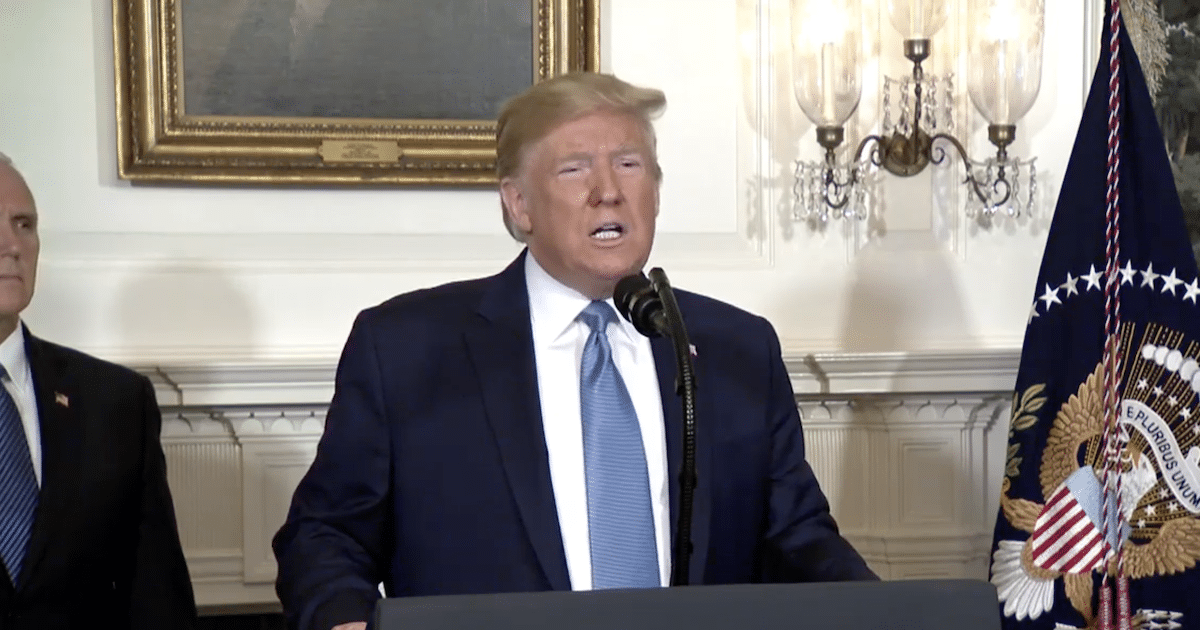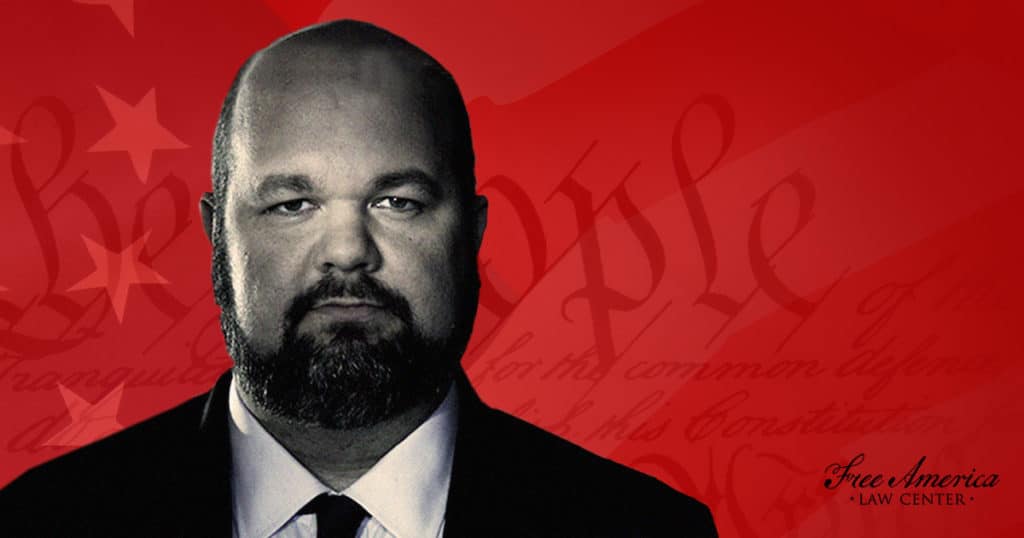Four Examples of Big Media Manufacturing Divisive Lies to Suggest Trump Is Racist

The primary source of division in the United States of America is corporate big media, not Donald Trump. Now openly partisan, big media have been dividing Americans for political gain long before he ever came on the political scene.
Here are four of the worst, most cited lies big media manufactured and critics have used to support the allegation Donald Trump is a racist.
Big Media Lied About Trump From the Jump
On June 16, 2015, big media began spreading the lie Donald Trump called Mexicans rapists, even that he called all Mexicans rapists. It became and remains one of the most frequently used examples to support accusations of racism.
He said no such thing. Here is the video and entire relevant transcript.
The U.S. has become a dumping ground for everyone else’s problems. It’s true. And these aren’t the best and the finest.
When Mexico sends its people, they’re not sending their best. They’re not sending you [pointing]. They’re not sending you [pointing].
They’re sending people that have lots of problems, and they’re bringing those problems with us. They’re bringing drugs. They’re bringing crime. They’re rapists and, some, I assume are good people. But I speak to border guards and they tell us what we’re getting.
And it only makes common sense. It only makes common sense. They’re sending us not the right people. It’s coming from more than Mexico. It’s coming from all over South and Latin America and, it’s coming probably, from the Middle East. But we don’t know because we have no protection.
Donald J. Trump, Presidential Campaign Announcement at Trump Tower in New York City on June 16, 2015
Crass and lacking tact? Absolutely.
But Donald Trump did not say Mexicans are rapists, let alone that all Mexicans are rapists. It is no more true than the reports claiming he called for the creation of a national database for Muslims.
Trump Called for a Muslim Registry
Jussie Smollett — who staged being the victim of a hate crime at the hands of the president’s supporters in Chicago — fully believed Donald Trump called for a national database to serve as a Muslim registry. He is by no means alone in that belief.

He did no such thing. In November 2015, then-candidate Donald Trump was interviewed by Hunter Walker at Yahoo! News. The exchange followed:
Hunter Walker (Yahoo! News): Do you think we need to register Muslims in some type of database or note their religion on their I.D.?
Donald Trump: Well, we’re going to have to look at a lot of things very closely. We’re going to have to look at the mosques. We’re going to have to look very, very carefully.
Hunter Walker interviewing Donald Trump for Yahoo! News, November 2015
When it was first reported by Yahoo! News, Mr. Walker reported he wouldn’t rule out a Muslim registry. CNN later reported “Donald Trump on Thursday called for the creation of a national database” in a story published online under the headline, Trump Wants Muslim Database.
Worth noting, Islam is a religion, not a race. But much like the tweet above, the facts do little to silence the critics.
A “Hitlerian” Inaugural Address
Donald Trump’s Inaugural Address on January 20, 2017, was a clarion call for conservative populism. He put the status quo powers on notice and told the American people they would never be forgotten again.
Here is the entire address and a transcript of “a few of the most memorable lines” from the address.
For too long, a small group in our nation’s capital has reaped the rewards of government while the people have borne the cost. Washington flourished, but the people did not share in its wealth. Politicians prospered, but the jobs left and the factories closed.
The establishment protected itself, but not the citizens of our country. Their victories have not been your victories. Their triumphs have not been your triumphs. And while they celebrated in our nation’s capital, there was little to celebrate for struggling families all across our land.
That all changes starting right here and right now because this moment is your moment, it belongs to you. January 20th, 2017 will be remembered as the day the people became the rulers of this nation again.
What truly matters is not which party controls our government, but whether our government is controlled by the people. This Americans carnage stops right here, and it stops right now. We are one nation and their pain is our pain.
When you open your heart to patriotism, there is no room for prejudice. We all bleed the same blood of patriots.
We share one heart, one home and one glorious destiny.
Donald J. Trump, Presidential Inaugural Address in D.C. on January 20, 2017
On MSNBC, Chris Matthews characterized the speech as “Hitlerian.” On his network and others, critics claimed the “us vs. them” theme didn’t actually refer to the “people vs. the powerful” but rather was a “white vs. non-white” reference.
It was an outrageous, divisive media manufactured lie meant to scare minority voters back to their socially constructed cells in a political prison run by their preferred party.
It was meant to guilt white voters who supported Donald Trump. It was meant to protect the status quo.
Neo-Nazis Are “Fine People”
The Charlottesville hoax — which relies on the belief Donald Trump called neo-Nazis “fine people” — is one of the most dangerous, irresponsible and divisive lies ever spread in U.S. political discourse. Big media purposefully and repeatedly omitted statements to take the president out of context.
Joe Biden not only cited but chose to focus on the lie in the video launching his presidential campaign. In the wake of the shootings in El Paso and Dayton, the hoax has resurfaced.
But it is not true. It is another media manufactured lie, perhaps the worst of all.
Donald Trump: Excuse me, they didn’t put themselves down as neo-Nazis, and you had some very bad people in that group. But you also had people that were very fine people on both sides. You had people in that group — excuse me, excuse me. I saw the same pictures as you did. You had people in that group that were there to protest the taking down, of to them, a very, very important statue and the renaming of a park from Robert E. Lee to another name.
Reporter: George Washington and Robert E. Lee are not the same.
Donald Trump: Oh no, George Washington was a slave owner. Was George Washington a slave owner? So will George Washington now lose his status? Are we going to take down — excuse me. Are we going to take down, are we going to take down statues to George Washington? How about Thomas Jefferson? What do you think of Thomas Jefferson? You like him? Okay, good. Are we going to take down his statue? He was a major slave owner. Are we going to take down his statue? You know what? It’s fine, you’re changing history. You’re changing culture and you had people — and I’m not talking about the neo-Nazis and the white nationalists, because they should be condemned totally — but you had many people in that group other than neo-Nazis and white nationalists, okay? And the press has treated them absolutely unfairly. Now, in the other group also, you had some fine people, but you also had troublemakers and you see them come with the black outfits and with the helmets and with the baseball bats — you had a lot of bad people in the other group, too.
That despicable hoax has spread far and wide, from politics to pop culture.
Americans can’t even watch a stand up comedy routine on Netflix without being subjected to it. In You Complete Me, Ho comedian Ken Jeong asked the audience how hard it was to denounce neo-Nazis. He concluded it was because the president is a racist.
Like Mr. Smollett, Ken Jeong believed the lie. Like most in Tinseltown, he relies on socially-approved media sources to feed him manufactured lies, which he in turn feeds to his audience, deepening the division.
The sad truth is that big media manufactured these lies with the intention of deepening division. If critics didn’t have them to reference in debate, they wouldn’t have much to debate, at all.
Here are four of the worst, most





















